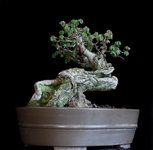Maxwell1015
Seedling
- Messages
- 6
- Reaction score
- 2
Hey new to bonsai so bear with me. I live in northwest Oregon and have English Hawthorn growing in my cow pastures. Some of them have been trampled over the years keeping them low and giving them good movement in the trunks. I found this one the other day and have a couple questions. I know Japanese hawthorn has been used in bonsai, but what about English hawthorn? When should I collect this specimen? Early fall or early spring? The main trunk is decently long maybe 6ft but has some branches near base one of which is cascading and a couple that go upright as well. I want to cut the long portion off and leave the cascading branches. Should I do this now while it is still in ground? Is this English Hawthorn worth making a bonsai out of? Thanks for any insight!





